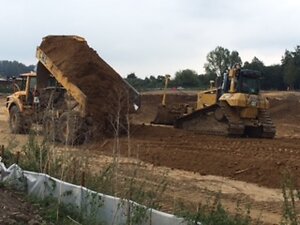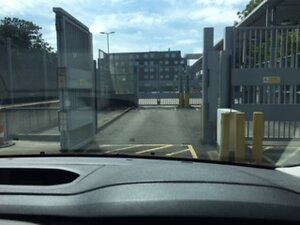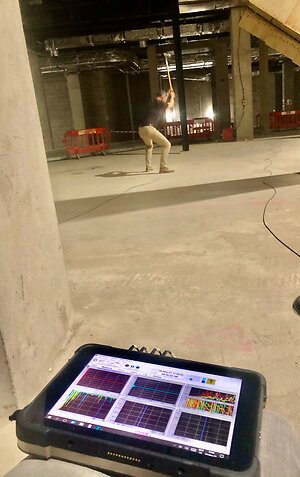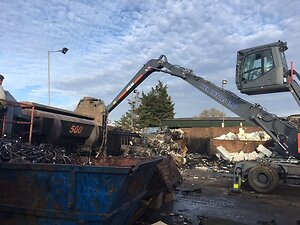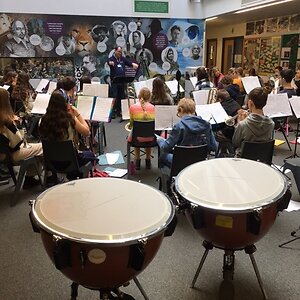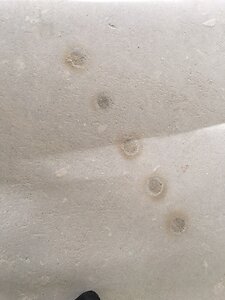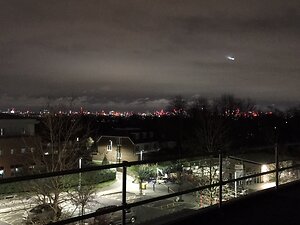Acoustic Survey, Assessment and Sound Insulation Testing
Competitively priced, acoustic survey, assessment, design and specification work carried out by Institute of Acoustics qualified and experienced personnel.
- Guy Davies, Senior Associate - Building Consultancy Group, RAPLEYS LLP
Fast third party accredited pre-completion sound insulation testing service. Acoustic Survey London. Noise Impact Assessment London. Sound Testing in London and the Home Counties.
- Sisu Berhane, Archway, London
The service provided is personalised and professional, focusing on acoustic survey, noise impact assessment, sound testing, acoustic design and noise control in the built environment.
- Iain Jee, Head of Operations, Neptune Investment Management
Feasibility studies and preliminary acoustic design advice to ensure appropriate site acquisition. Noise impact assessment input for successful planning outcomes on numerous projects.
- Liam N, Bromley
Agile business model tailored for small and medium sized projects.
David attended speedily, understood the requirement and carried out the assessment to a high standard. He subsequently produced a report that was very well presented and easy to understand. We would certainly use dBA again for similar projects "
- Tony Jackman, Head of Technical Services, Jaguar Building Services
Consultancy services include:
- Acoustic survey London
- Sound insulation testing
- Noise impact assessment
- Environmental noise surveys
- Discharge of planning conditions
- Sound insulation testing in London
- Architectural acoustics design advice
- Reverberation control, room acoustics
- Noise control specifications for building services
- Room Acoustics prediction modelling in CATT-Acoustic software
- Specifications to achieve suitable levels of privacy within office environments
- BB93 design review and advice pertaining to the acoustic design of schools
- BS5228 construction site noise assessment and report
- BS4142 noise impact assessment and report
- BS8233 noise ingress assessment and report
- Approved Document E advice
- Office fit-out
- Clinic fit-out
- Plant noise assessment and report
- Noise impact assessment for planning
- Acoustic surveys London and the South East
- Establishment of background or baseline noise levels
- Plant noise emission assessments for building services
- Third party technical review on behalf of Local Authorities
- Liaison with Local Authority concerning planning applications
- Preparation of acoustic reports for Local Authority submission
- Obtaining relevant acoustic data as required to support planning applications
- Building Regulations requirements design advice for residential new build or conversions
- Specifications to achieve suitable privacy within the health sector/clinic environments
- Pre completion sound insulation testing for building regulations
- Third party accredited residential sound insulation testing
- World Health Organisation guidelines advice
- Retrospective noise impact assessment
- BREEAM assessment and advice
- Sound insulation design advice
- Acoustic Survey London
- Sound Testing London
always been a problem, especially with patient confidentiality; we even had
to limit the number of patients in the building such that nothing could be
overheard. I consulted Mr Fernleigh; he covered all aspects of building
acoustics, outlining the structural "leaks". Everything was clearly
explained, even to a layman such as I. I received a detailed report and
was able to instruct my builder accordingly. The sound-proofing measures
have been excellent. I will most definitely be using Mr Fernleigh again on our next
surgery project; I cannot recommend him highly enough "
- Dr Simon Crawley, Rosewood Clinic, Surrey
Sound testing undertaken in London and the Home Counties
Survey and noise impact assessment work is also regularly undertaken on behalf of acoustic consultancies and other colleagues within the sector.
dBA Acoustics has worked on many, many projects in London and the South East of England. The consultancy has experience and, although based in the South East of England, has reach working across the UK where necessary. The consultant services offered include acoustic survey, measurement, testing, calculation, assessment, design and specification work covering most sectors.
- Alison Kan, Architect, London
Many local authorities and particularly the London and other urban Borough's require a noise impact assessment carried out for new items of building services plant. Usually, at the initial planning stage but also retrospectively if installed items of plant and/or noise emissions subsequently become known to the Local Authority. In this instance once again a noise impact assessment, usually in accordance with BS4142:2014 is likely to be required. dBA Acoustics specialise in noise impact assessment in London and the South East of England.
Acoustic survey London, independent acoustic consultancy based in South East England.
Through the design phase Clients including many Developers and Contractors, seek design advice from qualified acousticians in order to confirm the likely performance of some aspects, or indeed a whole development. From ad hoc advice to RIBA Stage design reviews, dBA Acoustics is able to input into just part of the development process, or provide advice for the complete design, as necessary.
Additionally, when a development is commissioned prior to practical completion, acoustic testing may be required in order to demonstrate that the built conditions achieve those targets or criteria set out at the design stage. In this case acoustic testing will be required. This can be to the advantage of Contractors, Developers and Authorities as it not only shows that the development is compliant, but can also assist in identifying where shortfalls may exist and provide guidance for rectifying any shortcomings, should any become apparent. dBA Acoustics offers testing and troubleshooting services.
- Amir, Resident, Richmond upon Thames
As of 2003, Building Regulations part E1 requires that all new or converted residential dwellings (including adjoined houses, flats and rooms for residential purposes) achieve certain levels of sound insulation. The required sound insulation performance can be verified in one of two ways. Either through the adoption and validation of specific construction details used in their construction, known as Robust Details. Or alternately, if Robust Details are not adopted, the sound insulation performance of the development must be validated by means of on-site pre-completion testing. If this approach is adopted, it is the responsibility of the builder to arrange for suitable on-site pre-completion testing to be carried out by a suitably qualified and accredited tester or testing body.
There are three types of sound insulation test: an airborne wall test, an airborne floor test and an impact floor test. A full set of tests is comprised of 2 airborne wall tests, 2 airborne floor tests and 2 impact floor tests. For up to 10 dwellings 1 full set of tests is normally required. Tests are not required for adjacencies that do not exist i.e. for flats where there are no separating walls I set of tests is normally comprised of 2 airborne floor tests and 2 impact floor tests. Similarly, for semi-detached houses where there are no separating floors, 1 set of tests would normally be comprised of just 2 airborne wall tests. Tests are undertaken only between adjacent habitable rooms (i.e. living rooms and bedrooms). The extent and location of the separating partitions to be tested is set out in the general guidance contained in Approved Document E but ultimately at the discretion of Building Control.
Procedure
The testing and rating procedure currently used is set out in the Standards BS EN ISO 140-4:1998; BS EN ISO 140-7:1998; BS EN ISO 717-1:1997 and BS EN ISO 717-2:1997
Pass or Fail?
Once testing has been completed a report and certification will be provided which can be submitted to Building Control. Should any part of the testing program fail to achieve the requirements then remedial measures will need to be implemented and re-testing undertaken to the satisfaction of Building Control.
- Jonathan and Kaye, Residents, Blackheath, London
Company registration number 11713113 registered in England and Wales
Registered office: Suite 1, 1st Floor, 42 Alexandra Road, Farnborough, Hampshire GU14 6DA
VAT number: 197 6941 43
- Michael Magdo, Resident, Maida Vale, London
TRC Solutions
GS Contracts
HK Interiors
Finch Consulting
auricl
Julian Bluck Designs
Mayer Brown
Adsat International
Jaguar Building Services
Boom Collective
Inhere
Matthews and Son LLP
Mott Macdonald
Institute of Measurement and Control
DThomas Clinics
s8Construction
Sweetings
Overbury
GAPS Power
Colliers International
Air and Acoustic Consultants
Ian Barber Architects
RME Services Limited
Wilkinson King
Barar Homes
Pirate Studios
Rowbots Limited
Ipos Ltd
Willow Court Management Company
OT Associates
ABC Homes Ltd
South East Water
London Farmers Market Limited
One Night Records Limited
Vanguard Healthcare Solutions
Rika Tower Ltd
Ivar Capital Limited
Zuaya
Guy Piper Architects
WME Boom
Principal Proj X Ltd
Gin and Juice
The Wolf Pub Ltd
Exhibit Bars
St George
Enisca Browne Limited
WS Planning and Architecture
Squared Architects
PRarchitecture
RAA4 Developments Ltd
Rapleys LLP
Studio Stassano
Mishcon Jackson
Majestic Wine Warehouse Ltd
The Metropolitan Police Service
Benedict O'Looney Architects
The Thin White Duke Ltd
St George's University Hospitals
NHS Foundation Trust
StudioAct
Surrey Heath Borough Council
Into The Garden Room
Lewandowsky Architects
Hampton Court House School
Sand Martins Golf Club
Husband and Partners Architects
Avicam Homes Limited
Exedra Architects
D F Keane Builders and Contractors
Accuro Residential Limited
Hatch Homes
Design I.D. Ltd
Atelier-Set Architecture
Gunter & Co Interiors
Vertice Ltd
Waverley Borough Council
Gillian Radford & Co Solicitors
Weightmans LLP
Vita Architecture
Quantum Acoustics
Hascombe Parish Council
Sorbon Estates
Quantum Land and Planning
Turnip Distribution
Adam Architecture
Classic Contracts Limited
A logarithmic scale representing the sound pressure or power level relative to the threshold of hearing (ref : 20μPa).
Sound Pressure Level :
The sound pressure level is the sound pressure fluctuation caused by vibrating objects relative to the threshold of hearing.
Airborne Sound :
Sound that originates from, and travels through, the medium of air e.g. speaking voice, although it may subsequently travel through structure.
Impact Sound :
Sound that originates from, and travels through, structure e.g. footfall, although it may subsequently travel through air.
DnT,w :
The weighted (w) standardised (nT) sound level difference (D), a single number indicator of the on-site airborne sound insulation performance of a construction, usually measured across the frequency range 100-3150 Hz. The higher the value of DnT,w, the greater the sound insulation, and the more onerous the requirement. A spectrum adaptation term C, or Ctr, may be applied to the DnT,w
L’nT,w :
The weighted (w) standardised (nT) sound pressure level (L), a single number indicator of the on- site impact sound insulation performance of a construction, usually measured across the frequency range 100-3150 Hz. L’nT,w is usually specified as a maximum sound pressure level in the receiving room. The lower the value of L’nT,w, the quieter the received impact sound, and the more onerous the requirement.
Reverberation Time :
The time taken, in seconds, for a sound to decay by 60 dB. The longer the time taken for the decay, the longer the reverberation time. Reverberation generally differs with frequency and hence is normally measured in octaves (125 Hz-4kHz) or third octaves (100 Hz-5 kHz).
LAeq,T :
The equivalent continuous A-weighted sound pressure level defined IN BS4142:2014 as the value of the A-weighted sound pressure level in decibels of continuous steady sound that, within a specified time interval, T = t2 – t1, has the same mean-squared sound pressure as a sound that varies with time.
LA90 :
The background sound level as defined in BS4142:2014 as the A-weighted sound pressure level that is exceeded by the residual sound at the assessment location for 90% of a given time interval, T, measured using time weighting F and quoted to the nearest whole number of decibels.
LAmax :
The maximum A-weighted sound pressure level in a given time interval, T, measured using time weighting S (slow) or F (fast) and quoted to the nearest whole number of decibels.
Ambient Sound :
As defined by BS4142:2014 is the totally encompassing sound in a given situation at a given time, usually composed of sound from many sources near and far.
Specific Sound :
As defined by BS4142:2014 is the sound source being assessed.
Residual Sound :
As defined by BS4142:2014 is the ambient sound remaining at the assessment location when the specific sound is suppressed to such a degree that it does not contribute to the ambient sound.
Rating Level :
As defined by BS4142:2014 is the specific sound level plus any adjustment for the characteristic features of the sound.
Tonality:
An acoustic character correction from BS4142. For a prominent, discrete tone to be identified as present, the time-averaged LZeq,T sound pressure level in the one third-octave band of interest is required to exceed the time-averaged LZeq,T sound pressure levels of both adjacent one-third-octave bands by some constant level difference.
The level differences between adjacent one-third-octave bands that identify a tone are:
•15 dB in the low-frequency one-third-octave bands (25 Hz to 125 Hz);
•8 dB in the middle-frequency one-third-octave bands (160 Hz to 400 Hz); and
•5 dB in the high-frequency one-third-octave bands (500 Hz to 10 000 Hz).
Impulsivity:
An acoustic character correction from BS4142. Noise events with a rapid onset or subjectively sudden initiation. The faster the onset rate and greater the magnitude of sound pressure level, the more prominent the impulsivity.
Intermittent:
An acoustic character correction from BS4142. When a specific sound has recognisable on/off conditions over the reference time period (rather than being "always on" for example).
VHF : an acronym for Very High Frequency when used in relation to radio waves designates signals from 3 to 30MHz and considerably higher than the upper threshold of human hearing.
VHFS : similar to the above though when in used relation to sound pressure i.e. Very High Frequency Sound: used to refer to sound that is in the upper range of human hearing e.g. 10-20kHz.
Lday :
The A-weighted long-term average sound level as defined in ISO 1996-1: 2016, determined over all the day periods of a year.
Levening : is the A-weighted long-term average sound level as defined in ISO 1996-1: 2016, determined over all the evening periods of a year.
Lnight :
The A-weighted long-term average sound level as defined in ISO 1996-1: 2016, determined over all the night periods of a year.
Lden :
An average sound pressure level over a whole day, evening and night, a compound indicator of the above mentioned Lday, Levening, and Lnight with penalties of +5dB and +10dB for evening and night time periods respectively.
HTM 08-01 Health Technical Memorandum: Acoustics: Department of Health requirements for the acoustic performance of health care facilities.
WHO :
The World Health Organisation.
BB93 :
Is Building Bulletin 93 “Acoustic Design of Schools: Performance standards” and sets out the minimum performance standards for the acoustics of school buildings.
IANL :
As defined in BB93 is the indoor ambient noise level within teaching accommodation and is comprised of a 30minute LAeq.
'A' Frequency Weighting:
e.g. dB(A), LAeq, LAmax. Derived from equal loudness contours, the commonly used weighting filter of the audible frequency range that accounts for the response of the average human ear to noise stimulus. This is the predominantly adopted weighting used in architectural acoustics and building services noise control.
'C' Frequency Weighting:
e.g dB(C), LCPeak. Less commonly used weighting filter of the audible frequency range used when determining peak sound pressure and accounts for tendency for the human ear's response to flatten off at high levels.
'Z' Frequency Weighting;
e.g. dB(Z), LZeq, LZmax. The flat frequency response of a measurement and essentially no weighting at all, formerly referred to as linear. Often used to examine octave or third octave frequency data.
- Preliminary site works at a huge development location in Kent. The earthworks shown are part of preparations for an extensive distribution centre. Always loved Tonka Toys!
- The substantial double security gates one has to negotiate in order to gain access the car park at a recent project for the Metropolitan Police.
- Using an impact hammer to measure the transfer function between a basement and residential flats above. A Client is interested in the feasibility of developing an indoor roller coaster! This testing was on behalf of Finch Consulting who went on to win an ANC award for the project.
- An Atlas material handler in the process of manoeuvring a car to be crushed or "baled" (as seen in the James Bond movie Goldfinger and also Vincent and Jules's car in Pulp Fiction. After 30 years in business this scrap metal industrial unit is now required to apply for planning permission every 5 years.
- Noise At Work assessment for the conductor of this school orchestra...
-The ghost of a tapping machine, or rather the effects of its previous presence. The machine incorporates a line of five hammers that drop in a calibrated and continuous sequential cycle onto the floor surface. The vibrations from the repeated impacts of the hammers cause the dust to displace leaving five neatly dust free mini craters.
- Night time view of towards London from the roof of a temporary modular operating theatre at Queen Marys Hospital, Roehampton. The facility was originally installed under emergency arrangements (without conventional planning permission) to help cope with increased demand due to the pressure of the Covid pandemic on hospital resources. The services plant serving the development had no acoustic attenuation and had to run off of a temporary generator as there was insufficient power available locally. Following the granting of planning permission to remain for a further 3 years, a dedicated substation is to be installed and the building services plant attenuated to now meet planning requirements.

